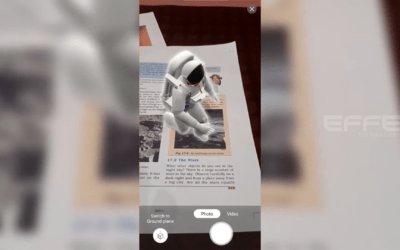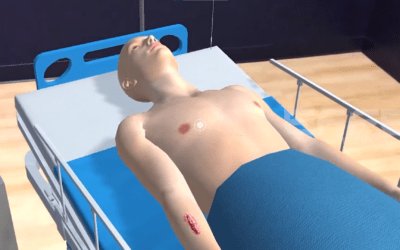Project Brief:
In the rapidly evolving K-12 education industry, integrating augmented reality (AR) has become pivotal in enhancing student engagement and learning outcomes. This case study explores the development and implementation of an AR solution tailored for K-12 e-learning environments. By leveraging augmented reality services, including specialized tools like the AR Solar System Simulation, the project aimed to create immersive educational experiences that bridge the gap between traditional teaching methods and modern technological advancements.
Client Requirement:
The client, a leading educational institution, recognized the need to innovate their teaching methodologies to cater to the digital-native generation. Their primary requirements included:
- Interactive Learning Modules: Development of AR-enhanced modules for core subjects, such as the AR Solar System Simulation, to make learning more engaging and interactive.
- Seamless Integration: An AR solution that integrates smoothly with existing e-learning platforms without disrupting current workflows.
- Accessibility: Ensuring the AR content, including modules like the AR Solar System Simulation, is accessible across various devices, including tablets, smartphones, and desktops, to accommodate all students.
- Educator Training: Comprehensive training programs for educators to effectively utilize the augmented reality service in their teaching practices.
Project Planning, Strategy, and Our Process:
To address the client’s needs, we adopted a structured approach encompassing several key phases:
- Needs Assessment and Research: We conducted in-depth consultations with educators and stakeholders to understand the specific challenges and opportunities within the K-12 education industry. This involved analyzing current teaching methods and identifying areas where augmented reality, such as the AR Solar System Simulation, could add significant value.
- Design and Development: Leveraging insights from the research phase, our team designed AR modules aligned with the K-12 curriculum. These modules included 3D visualizations, interactive simulations like the AR Solar System Simulation, and virtual experiments to enhance understanding of complex concepts.
- Integration: The AR solution was developed to be compatible with existing e-learning platforms. We ensured that the AR content, including the AR Solar System Simulation, could be easily accessed and utilized without requiring significant changes to the current infrastructure.
- Testing and Feedback: Pilot programs were implemented in select classrooms to gather feedback from both educators and students. This iterative process allowed us to refine the AR modules, ensuring they met educational objectives and were user-friendly.
- Training and Support: We developed comprehensive training materials and conducted workshops to equip educators with the necessary skills to effectively implement augmented reality services, including the AR Solar System Simulation. Ongoing support was provided to address any challenges during the adoption phase.
- Deployment and Evaluation: After successful testing and training, the AR solution, featuring tools like the AR Solar System Simulation, was rolled out across the institution. Continuous monitoring and evaluation were conducted to assess the impact on student engagement and learning outcomes, allowing for further refinements as needed. Visit Our Partner Website

Deliverables and Client Benefits:
Deliverables:
- A suite of AR-enhanced learning modules covering core K-12 subjects, including the AR Solar System Simulation.
- Integration of the AR solution with existing e-learning platforms.
- Training programs and materials for educators to effectively utilize the AR service.
- Ongoing technical support and updates to ensure the solution remains effective and relevant.
Client Benefits:
- Enhanced Student Engagement: The interactive nature of augmented reality, especially tools like the AR Solar System Simulation, captured students’ attention, making learning more enjoyable and effective.
- Improved Learning Outcomes: Students demonstrated a better understanding of complex subjects, including astronomy, through immersive AR experiences like the AR Solar System Simulation.
- Educator Empowerment: Teachers were equipped with innovative tools to deliver content more effectively, fostering a more dynamic classroom environment.
- Competitive Advantage: By adopting cutting-edge AR solutions like the AR Solar System Simulation, the institution positioned itself as a leader in educational innovation within the K-12 sector.
Conclusion:
The integration of augmented reality in K-12 e-learning environments has proven to be a transformative approach, enhancing both teaching and learning experiences. Modules like the AR Solar System Simulation underscore the potential of AR to revolutionize education, making it more interactive, engaging, and effective for the digital age.




